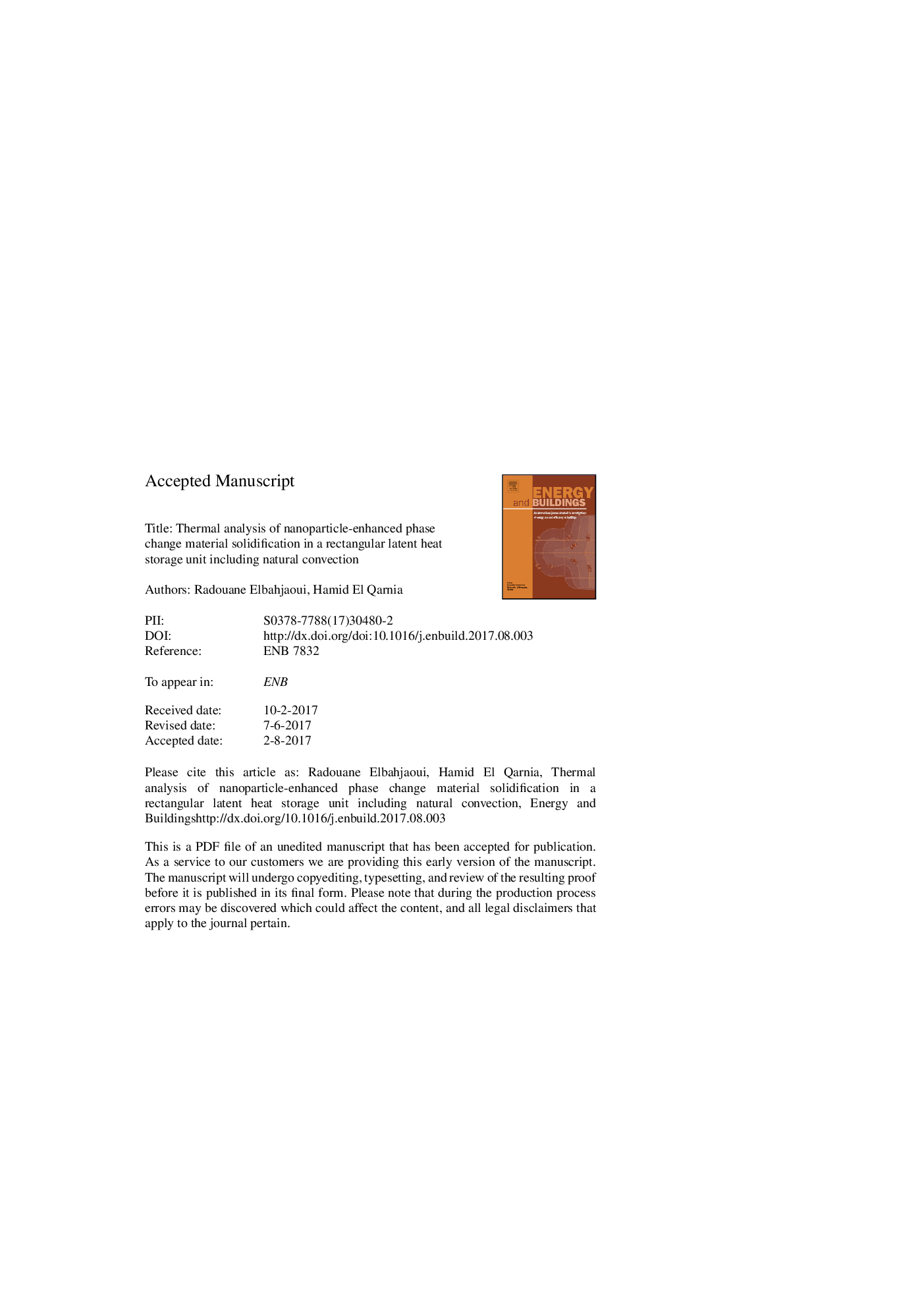| Article ID | Journal | Published Year | Pages | File Type |
|---|---|---|---|---|
| 4918966 | Energy and Buildings | 2017 | 44 Pages |
Abstract
The present study aims to investigate the solidification process of nanoparticle-enhanced phase change material (NEPCM) filled in a rectangular latent heat storage unit (LHSU). The storage unit consists of several slabs filled with n-octadecane as phase change material (PCM) dispersed with high conductivity nanoparticles (copper). The NEPCM slabs are vertically oriented and separated by rectangular channels in which circulates water as heat transfer fluid (HTF). A two-dimensional model has been developed and validated by experimental, theoretical and numerical data available in literature. The enthalpy porosity method was adopted for modeling the phase change process and the finite volume approach was used to discretize the resulting equations. The numerical simulations were conducted to investigate the effect of the volumetric fraction of nanoparticles, aspect ratio of NEPCM slabs and dimensionless HTF inlet temperature on the heat transfer enhancement and storage performance of the LHSU during solidification process. A correlation encompassing all investigated control parameters has been developed to estimate the solidification time of NEPCM slabs.
Related Topics
Physical Sciences and Engineering
Energy
Renewable Energy, Sustainability and the Environment
Authors
Radouane Elbahjaoui, Hamid El Qarnia,
